Month: February 2022
How to Create a Booking App for Your Gym or Fitness Studio
Why develop a mobile app for a fitness club?
Fitness and nutrition mobile apps often play the role of personal trainers and dietitians. Still, lots of people prefer to go to gyms and combine technologies with their workouts.
According to Digital Trends, 51% of people use their smartphones while working out.

But a mobile app can do more than assisting. Instead of being a standalone product people use at the gym, it can actually be an assistant that benefits both your customers and your business.
Many people are moving away from monthly or yearly gym memberships toward different classes. Yoga, Zumba, and other group classes allow people to both work out and have fun without getting bored of the same activities. Currently, 40% of people who do sports go to group classes, while only 12% work with a personal trainer in a gym.
In this article, we’ll discuss how you can use a mobile app to achieve several goals:
- Provide customers with a convenient class booking tool
- Upsell and inform loyal customers about your special offers and upcoming classes
- Attract a wider audience of active mobile users
- Get free marketing with the help of social media
Now let’s discuss how exactly you can achieve these goals by developing a mobile app for your fitness center.
Top 5 ways to upgrade a fitness center with an app
Mobile apps already help hundreds of businesses gain new customers, increase engagement, and turn newcomers into regular customers. Apps for gyms and fitness studios can do that as well. Let’s see how exactly a mobile app can help your business thrive.
1. Attract new members to your fitness center
Most people who visit your fitness center are active mobile users. They use their phones for almost everything, from booking tickets to planning meals. You can give them an opportunity to manage and plan their visits to your fitness center as well.
According to Digital Trends, 51% of people use their smartphones while working out
A mobile app can help you promote your fitness classes by integrating social media features. As most people love to share their fitness experiences with friends, they will likely share them on social media and become brand ambassadors.
To attract new members to your gym, you can also use digital coupons for trial classes and encourage more people to install your app so you can later connect with them via push notifications.
2. Get to know your most loyal customers better
Apps are one of the best ways to learn more about your audience. Analytics allow app owners to find out the demographics of users and when they typically use the app.
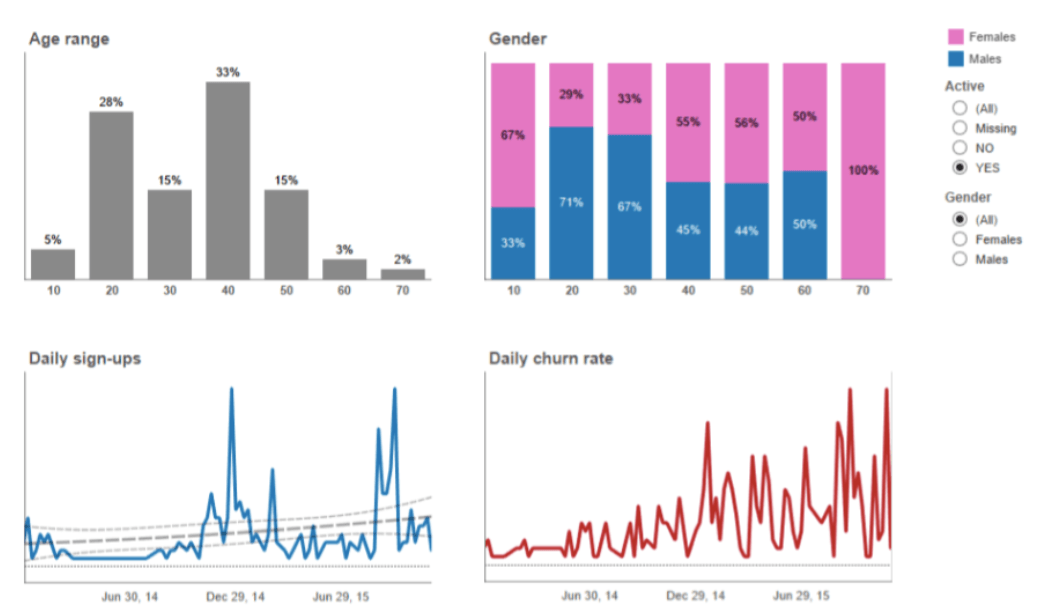
You can configure your app’s dashboard to show you who books classes most often, which classes people choose, and how much each customer spends each month on classes and gym memberships.
3. Improve the customer experience in your gym
Often, fitness centers have their class schedules printed on leaflets or hanging on the walls, but people often don’t have those at their disposal at all times.
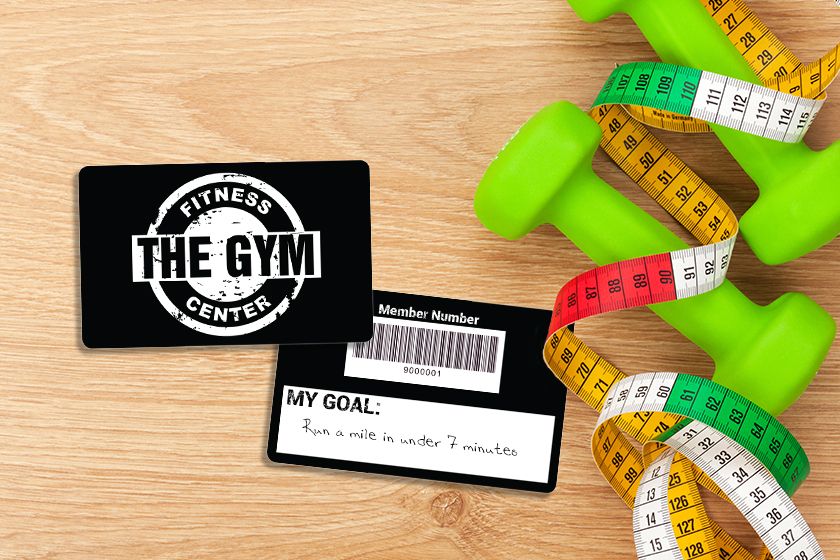
Their smartphones, however, are always with them. You can make your visitors’ lives so much easier by allowing them to see the gym schedule, book classes, and pay for them right from their phones.
While your customers will use a mobile app, you’ll have a web dashboard where you can manage all your app activities, from push notifications to schedules.
You can connect a dashboard with your internal CRM so you and your managers are to control all processes inside your app.
Another way to make the customer experience more pleasant is to implement check-in with a mobile phone. Ask yourself how often your customers lose their membership cards. This won’t be the case with a mobile app, because a smartphone is always at hand.
4. Increase your outreach and make it more effective
Connecting to customers can be a challenge, but not with mobile apps and push notifications. Push notifications are extremely cheap to send, and they have a whopping 98% open rate. Compare that with email, which is opened only 15–25% of the time.
With push notifications, you can inform your customers about changes in the schedule, for example, cancelled classes. You can also promote new deals on gym memberships.
To make your approach more personalized, you can send targeted notifications to certain groups of people. This will make your special offers more tailored to your customers’ needs, leading to more conversions and more revenue.
5. Create new sources of income
On average, gyms need ten times more members than their capacity in order to stay profitable. This means that additional sources of income are crucial for gyms and fitness centers, and this is exactly what a mobile app can help with.
First, you can establish your own online shop for sports products and equipment. A mobile app will help you sell more with the help of push notifications, special offers, and convenient payment methods.
Half of all gym members go to a particular gym because of its location. By providing online classes and individual training sessions, you can increase your number of customers
A second option for additional income is online classes. You can create a program for online members and thus expand your audience without location restrictions.
Half of all gym members go to a particular gym because of its location. By providing online classes and individual training sessions, you can increase your number of customers drastically.
Must-have features for a fitness club app.
Your app’s feature set depends solely on your business needs and your budget. We advise creating a solid MVP first, then adding features gradually according to what your customers need the most and what features they liked during the first iteration.
Let’s see what features you can use in your application to upgrade your fitness club.
Onboarding
Onboarding leads users through registration to their first experience in an app. It usually includes asking for personal information, registering users via social media or email, and tutorials. Tutorials aren’t compulsory; however, if your app is big, it’s a great feature for improving the user experience.
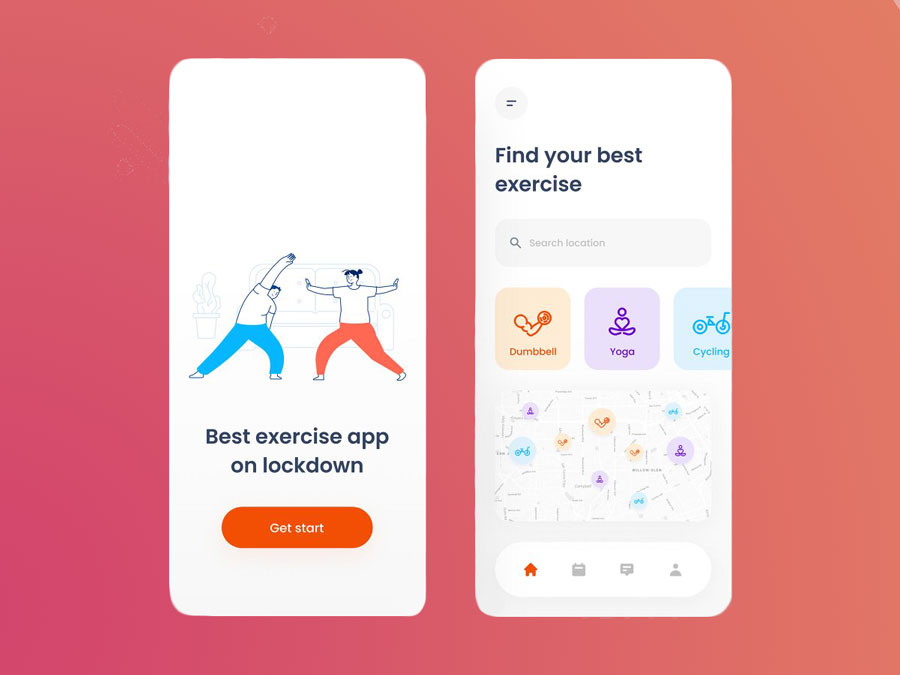
Also, think about registration methods. Currently, the best practice is to provide several options for registration:
- Mobile phone
- Social media accounts (Facebook and Instagram are the most popular)
- Membership card ID number (This is a great option for gyms.)
Login
Logging in and resetting forgotten passwords are other features you’ll need to implement. You should provide several options for logging in to your app. It’s more convenient for the user.
You shouldn’t make a user log in each time they launch the app, but it’s good practice to require it every once in a while for security and updates.
Personal profiles
A personal profile often includes information like name, phone number, and age. You can add whatever data is required for your app to function. For example:
- Age
- Weight
- Height
- Personal goals
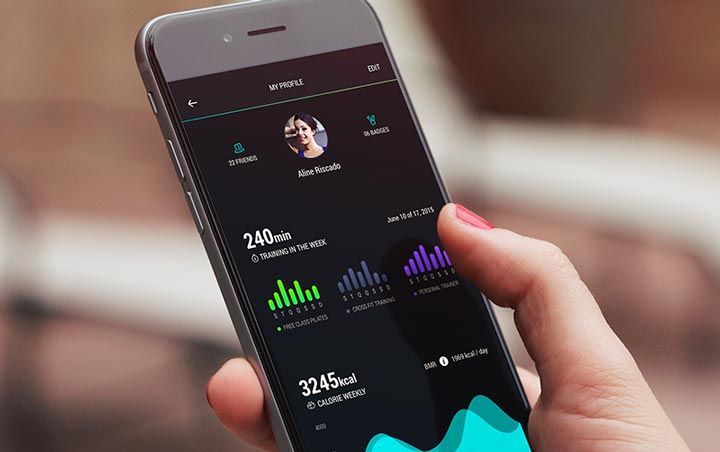
If your app features access to a digital membership card, you can also place the card here. A personal profile can also be a place for your app’s settings.
Real-time schedule
Users should be able to see all classes you have in your fitness center and book them. Once a class is booked, the number of available places should be reduced in real time, or the class should be displayed as no longer available. This will allow people to see what options they have and will avoid overbooking.
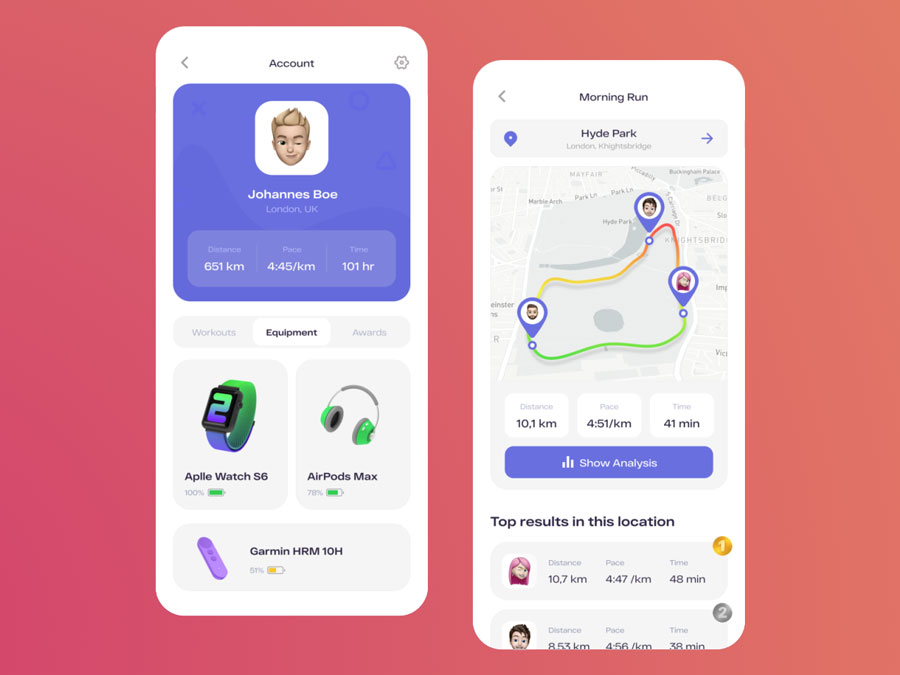
Also, you can show how many places are left: this will encourage your customers to book their classes in advance.
Class catalog
Show all classes in one place. Don’t forget to add photos, ratings, and other necessary information – for example, the difficulty level and length.
Class description page
These are separate pages that describe each class and provide more information you didn’t show in the catalog.
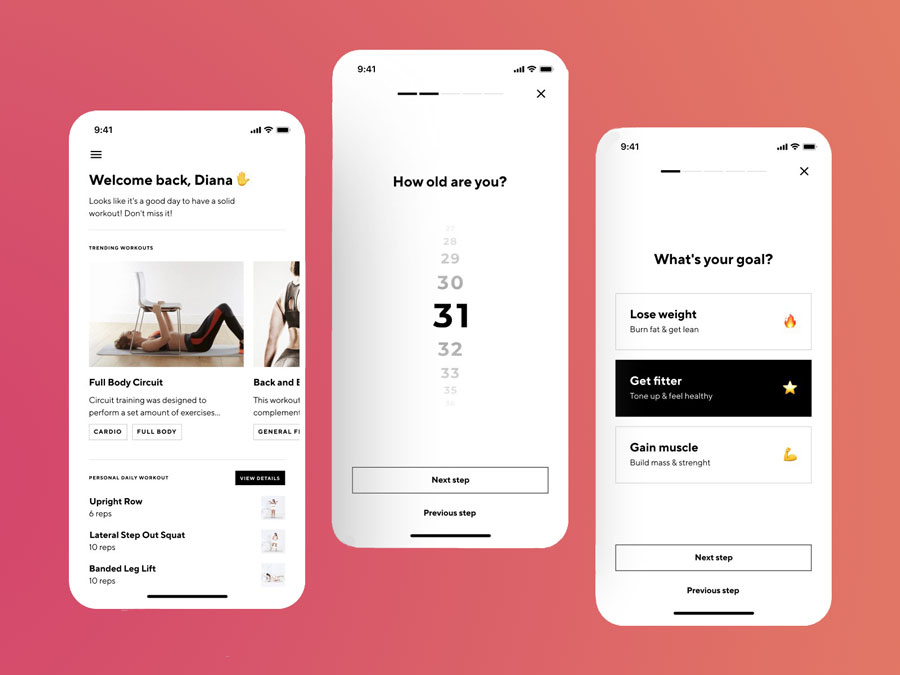
A class description page can include:
- More photos
- Short videos
- Trainers (names, photos, and bios)
- Schedule
- Price
- Booking options
Push notifications
Push notifications are a great tool for reaching your customers and improving their experience. There are a few types of push notifications:
Promotional notifications – Promote your new classes and inform users about special offers and promo campaigns.
Informational notifications – Let users know about updates or changes in the schedule.
Reminder notifications – Remind users about classes and membership card expiration.
Catch-up notifications – These will help you retain users who haven’t visited your app for a long time.
Recurrent notifications – These are sent at a particular time each day or on a particular day each week or month. You can remind users about their fitness goals or encourage them to come to your gym.
To send and manage push notifications, you can either implement your own admin panel or use a third-party push notification service like Firebase. Creating your own solution requires significantly more time and money, but if you do so you won’t have to pay monthly fees and will have the freedom to send as many notifications as you want.
However, if you aim to create an MVP, we’d advise a third-party solution.
QR code coupons and membership cards
With QR code support in your app, customers won’t have to worry about carrying their membership cards, coupons, and leaflets. Users can keep mobile coupons in one place, which will increase their loyalty to your fitness center.
Analytics
Analytics is an integral part of any mobile application. You need analytics to measure your achievement of marketing and technical goals. Analytics can show you:
- How your app is doing technically (e.g. crash statistics, performance on different devices)
- How well your marketing campaigns work
- What features are the most popular among users
- What devices the majority of your audience owns
You can use this information to improve your app and define your testing strategy. For example, if the schedule and booking feature is the most popular, you can put it on the first screen or highlight it in a menu bar.
You need analytics to measure your achievement of marketing and technical goals
If your customers use iPhones more than Android devices, you should test your iOS app more and improve it.
You can also change your marketing campaigns by analyzing the best time for push notifications and the best days of the week for your special offers and promo campaigns.
Social media integration
Integrate social media services like Facebook, Instagram, and Snapchat to allow users to share their experiences. Most people achieve more if they share their activities with friends, so encourage your customers to share.
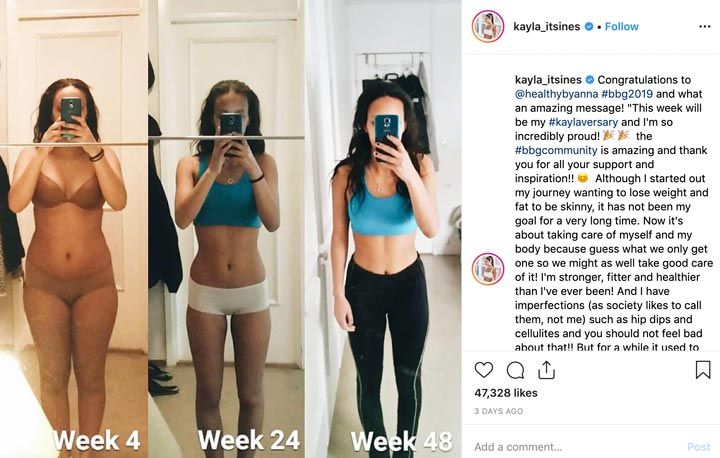
By integrating social media sharing options, you can increase your social media presence and gain new customers.
Video streaming
By integrating video streaming into your app, you can create an additional source of revenue for your gym or fitness center. Say some of your customers are away and can’t come to the class. They can join you remotely and follow your trainers’ instructions via video.
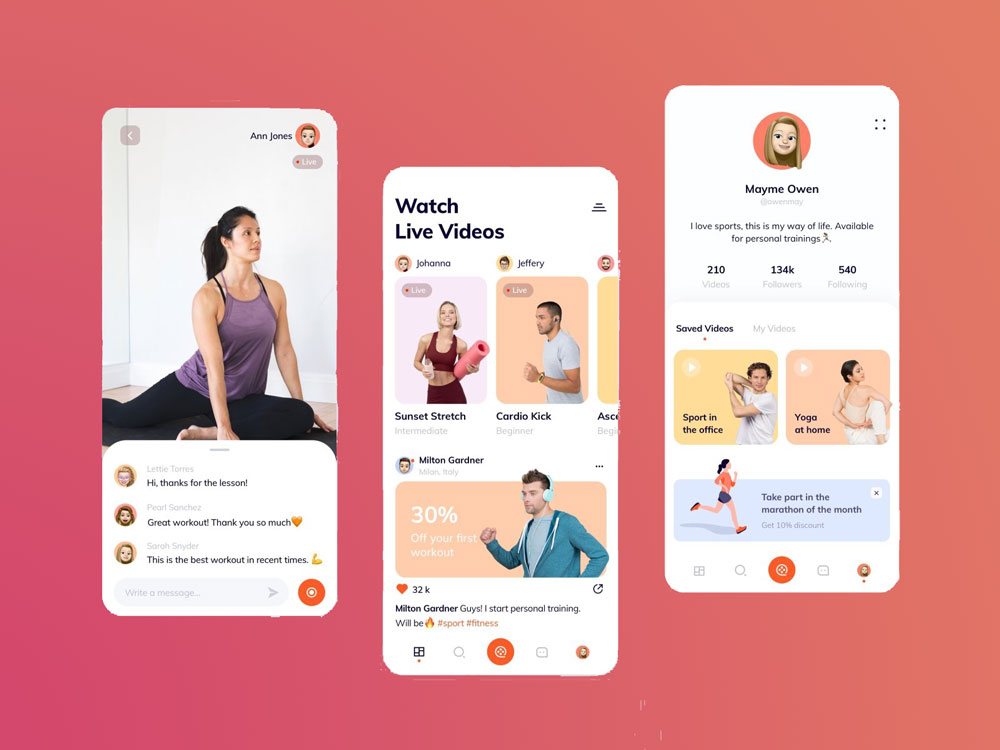
You can also attract completely new clients that like to train at home or are located far from your gym. Video streaming can help you conduct remote classes or promote your services to a wider audience.
Wearables integration
Wearables and fitness are almost inseparable. Even those who don’t regularly go to the gym wear smartwatches and fitness bands.
Integrate wearables into your app and allow users to track their progress. This will encourage them to visit your app more often.
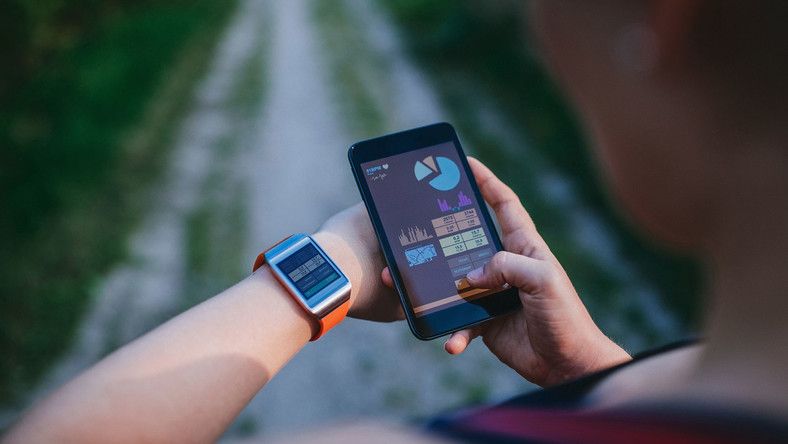
Sports product catalog
If you sell equipment, sports clothing, or food, be sure to create your own small mobile store.
Your store’s catalog should include categories and product cards with the name of a product, its rating, and a picture.
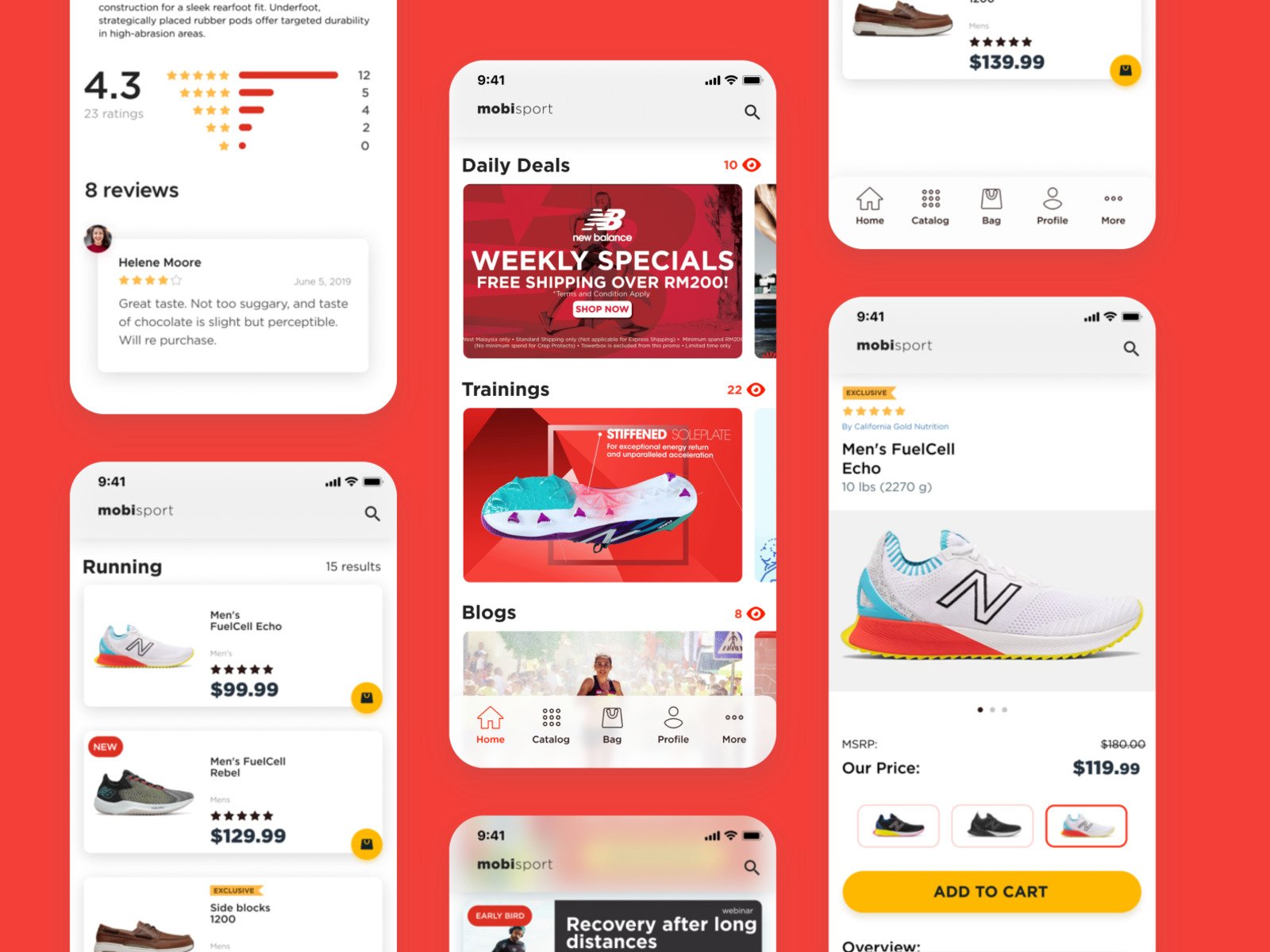
Product description page
A product description page should include more photos of a product, its description, reviews and ratings, and an “add to cart” button. You can add discounts and special offers as well.
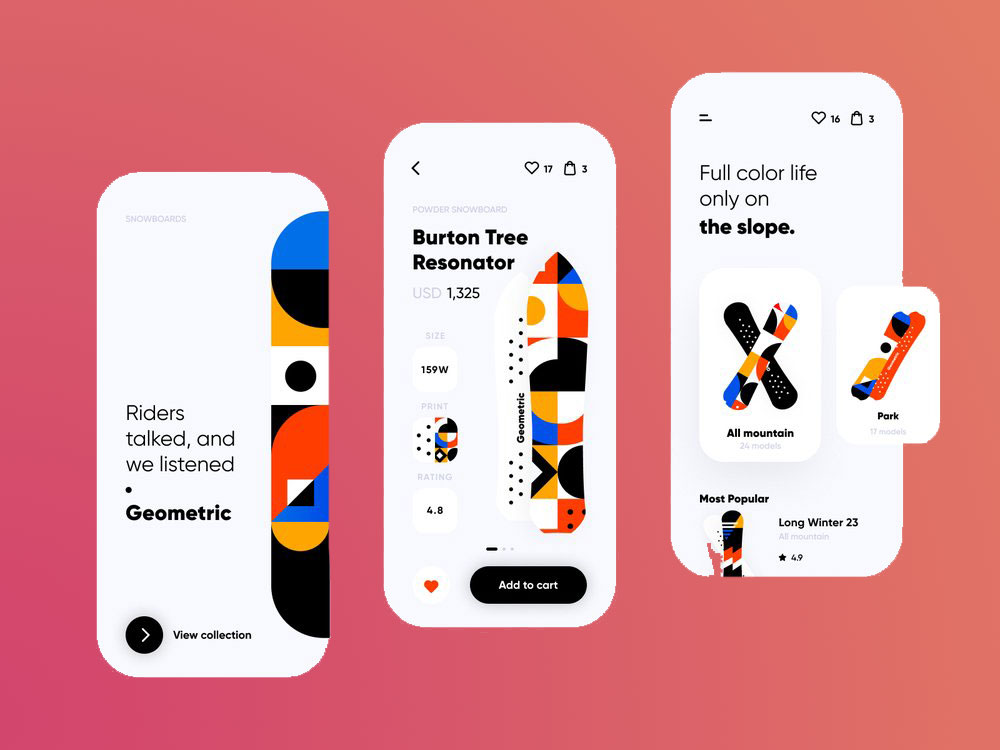
Search and filters
People are loyal to certain brands and products, so it’s a good idea to integrate search into your mobile shop. Filters by price, color, brand, and other parameters will help your users find what they want.
Before implementing search and filters, think carefully about product categories
Payment gateway
You need to integrate a payment gateway if you plan to sell products, classes, or membership cards directly from your application.
Each payment gateway charges a fee for every transaction: for example, Braintree’s processing fee is 2.9% plus $0.30 for each transaction.
We usually advise integrating Braintree, Stripe, or PayPal for fast and secure payments; however, you can choose any payment gateway that suits your audience, location, and goals.
Shopping cart
You’ll need a shopping cart for either your products and equipment or your classes. A shopping cart requires complex logic that takes discounts and loyalty system bonuses into account.
Checkout
The checkout is the final step of all your marketing and sales activities. A checkout needs to be as short as possible: avoid adding lots of unnecessary screens to keep the churn rate as low as possible.
These are the main features you may need for your gym or fitness center application. You may or may not need some of them depending on your business goals. In the next part of our article, we’ll discuss the time developers need to implement each feature and what else the cost of an app depends on.
Mobindustry experience in fitness app development
We created an application for a large chain of gyms in Indonesia. For this client, we implemented mobile membership cards, the online catalog of sports products, class bookings, and real-time scheduling. Other features also included maps and routes, payments and internal currency that allowed our client to save money on payment gateway fees.
If you want to learn about our work process on this app, the challenges we encountered, and ways how we resolved them, be sure to read our case study:
The cost of a fitness mobile app
The cost of a mobile app for your gym or fitness center depends on these factors:
- Scope of features
- Design
- Hourly rate of your development team
- Location of your development company
The hourly rate of developers influences the app’s cost the most, and hourly rates often depend on location. For example, an application that costs $40,000 to build in the US will cost around $9,000 if developed by engineers in Ukraine.
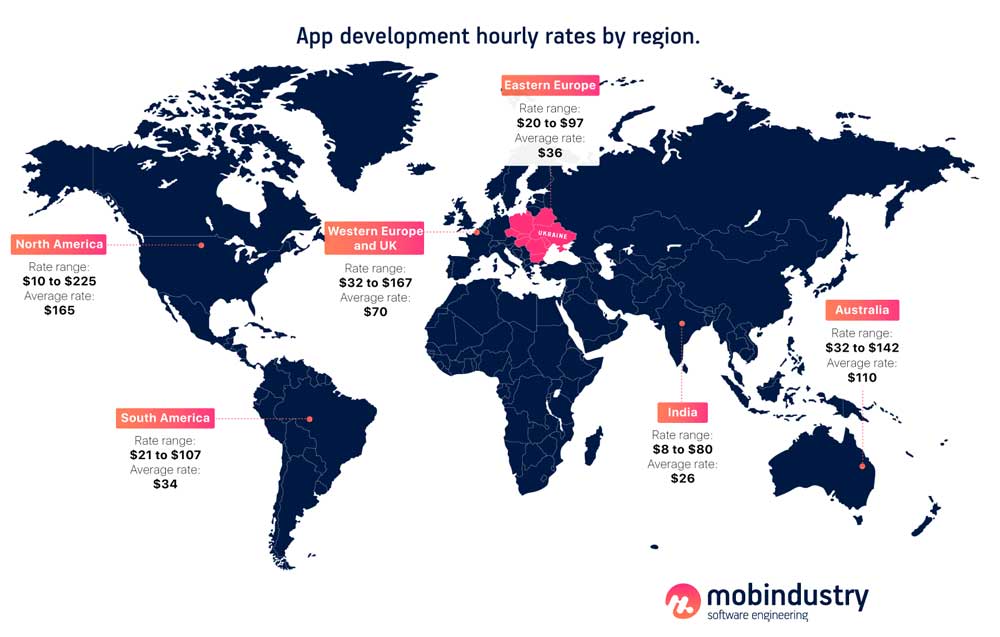
This is a rough estimate of each feature you may need for your project. Note that this estimate doesn’t include hours the team will need for communication, setting up the development environment, and defining the architecture and design.
| Features | Min–max, hours |
| Login / Registration / Forgot (reset) password | 22–36 |
| User profiles | 18–24 |
| Dashboard (challenges, nutrition, personal training, events, blog) | 18–24 |
| Countdown timer | 2–5 |
| Private group (create, edit, manage) | 20–26 |
| Exercise videos | 16–20 |
| Personal goals | 6–10 |
| Statistics | 16–24 |
| Progress | 6–10 |
| Results | 6–10 |
| Online store | 70–100 |
| Events (descriptions, upcoming events, webinars, etc.) | 26–40 |
| Membership | 40–50 |
| Payment system integration | 20–32 |
| YouTube and Instagram channel synchronization | 10–15 |
| Push notifications | 8–16 |
| Deep link integration | 8–16 |
| Video streaming | 10–24 |
| QR-code integration | 6–12 |
| Design | 40+ hours |
| Testing | 30% of the total |
Final thoughts
Mobile technologies have a lot to offer any business. Fitness is no exception, and people are constantly using technology to lead a healthy lifestyle. With a mobile application, you as the owner of a sports-related business can achieve several goals:
- Increase loyalty of your existing customers by improving their experience
- Attract a new audience, especially a younger one
- Get more information about your customers to target your marketing campaigns more precisely
- Have a strong tool for reaching your audience at all times
- Create new revenue streams by integrating online classes
- Get an effective sales channel for your products and supplies
At Mobindustry, we have experience creating fitness app and ecommerce mobile apps for businesses of all sizes, from small fitness startups to large companies with over 250 physical locations.
If you want to bring your gym, fitness center, or yoga club to another level, be sure to contact us for more information.

